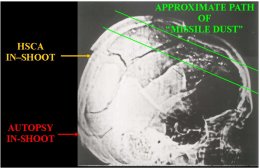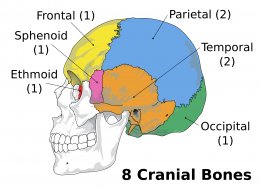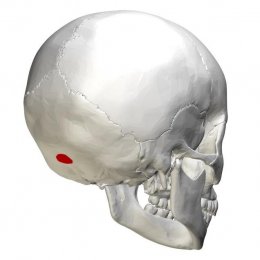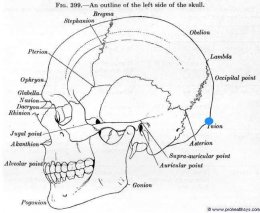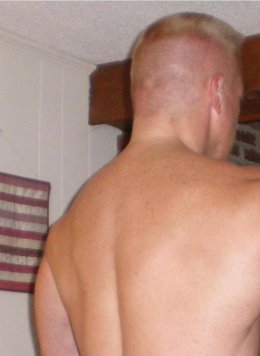Post by Beyond WikipediaPost by Anthony Marshhttp://www.the-puzzle-palace.com/Globe11-23-63.jpg
Is the dark squiggly line in Kennedy's neck on the X-ray not evidence for
a EOP-throat connection?
I can't tell what you are talking about. SHOW me.
Do you mean the Boston Globe diagram?
That was just rumors they heard.
No scientific basis.
http://www.the-puzzle-palace.com/Globe11-23-63.jpg
In fact Dr. Perry said the bullet entered the throat and exited the top
of the head. I don't think he diagrammed it.
Subject: Re: Dr. Perry's hypothetical answer
Date: Tue, 19 Jun 2001 04:07:08 GMT
From: ***@ix.netcom.com (Barb Junkkarinen)
Organization: MindSpring Enterprises
Newsgroups: alt.conspiracy.jfk
Post by Beyond Wikipedia"At the news conference, Dr. Perry answered a series of hypothetical
questions
Post by Beyond Wikipediaand stated to the press that a variety of possibilities could account for
the
Post by Beyond WikipediaPresident's wounds. He stated that a single bullet could have caused the
President's wounds by entering through the throat, striking the spine, and
being deflected upward with the point of exit being through the head.
This
Post by Beyond Wikipediawould have accounted for the two wounds he observed, the hole in the front
of
Post by Beyond Wikipediathe neck and the large opening in the skull."
Dr. Perry had insufficient knowledge of the President's wounds when he
made
the
Post by Beyond Wikipediaabove statement. However, Dr. Perry's hypothetical trajectory infers a
rear
Post by Beyond Wikipediahead wound. The reason is the angle of deflection of the bullet by the
spine
Post by Beyond Wikipediahad to be less than ninety degrees. In other words, a bullet striking the
throat from the front would exit to the rear at some increased elevation.
One does not need to infer anything.....the WC supposedly couldn't
locate it, but the Parkland Press Conference lives on. Perry and Clark
are quite explicit about there being a wound in the rear of the
head....and how, though they didn't know if more than one bullet had
been involved in JFK's wounds, the large wound at the rear of the head
could have been the exit for the throat wound (which they thought
looked like an exit).....or an additional tangential shot. Transcript
of the press conference follows.
[This transcript was typed by former JFK researcherKathleen Cunningham
and given to me in late 1994. BJ]
QUOTE
PRESS CONFERENCE
PARKLAND MEMORIAL HOSPITAL
DALLAS, TEXAS
NOVEMBER 22, 1963
3:16 P.M. CST
AT THE WHITE HOUSE WITH WAYNE HAWKS
MR. HAWKS-
Let me have your attention, please.
You wanted to talk to some of the attending
physicians. I have two of them here, Dr. Malcom Perry, an
attending surgeon here at Parkland Memorial Hospital. He
will talk to you first, and then Dr. Kemp Clark, the chief
neurosurgeon here at the hospital. He will tell you what he
knows about it.
Dr. Perry.
QUESTION-
Were you in attendance when the President
died?
QUESTION-
Let him tell his story.
DR. MALCOM PERRY-
I was summoned to the Emergency Room shortly
after
the President was brought in, on an emergency basis,
immediately after the President's arrival. Upon reaching his
side, I noted that he was in critical condition from a wound
of the neck and of the head. Immediate resuscitative
measures--
QUESTION-
Would you go slower?
DR. MALCOM PERRY-
I noted he was in critical condition from the
wound
in the neck and the head.
QUESTION-
Could that be done by one shot?
DR. MALCOM PERRY-
I cannot conjecture. I don't know.
QUESTION-
A would [sic] of the neck and of the--
DR. MALCOM PERRY-
--of the head. Immediate resuscitative
measures were
undertaken, and Dr. Kemp Clark, Professor of Neurosurgery,
was summoned, along with several other members of the
surgical and medical staff. They arrived immediately, but at
this point the President's condition did not allow complete
resuscitation.
QUESTION-
What do you mean by "complete resuscitation"?
DR. MALCOM PERRY-
He was critically ill and moribund at the time
these
measures were begun.
QUESTION-
Completely ill and what?
DR. MALCOM PERRY-
Moribund.
QUESTION-
What does that mean?
DR. MALCOM PERRY-
Near death.
QUESTION-
What was the word you used?
DR. MALCOM PERRY-
Moribund. Dr. Clark arrived thereafter,
immediately.
QUESTION-
Could you tell us what resuscitative measures
were
attempted?
DR. MALCOM PERRY-
Assisted respiration.
QUESTION-
What is that?
QUESTION-
With what?
DR. MALCOM PERRY-
Assisted respiration with oxygen and an
anesthesia
machine, passage of an endotracheal tube.
QUESTION-
Does that mean you stick it in?
DR. MALCOM PERRY-
Yes, place it in the trachea.
QUESTION-
Spell it for us, please.
DR. MALCOM PERRY-
E-n-d-o-t-r-a-c-h-e-a-l. A tracheostomy.
QUESTION-
Did they perform a tracheostomy?
DR. MALCOM PERRY-
Yes.
QUESTION-
Would you spell it?
DR. MALCOM PERRY-
T-r-a-c-h-e-o-s-t-o-m-y.
QUESTION-
Was there a priest in the room at this time,
Doctor?
MR. HAWKS-
The doctor is just telling you about the
operation.
DR. MALCOM PERRY-
Blood and fluids were also given, and an
electrocardiograph monitor was attached to record any heart
beat that might be present. At this point, Dr. Clark was also
in attendance.
QUESTION-
What is his name?
DR. MALCOM PERRY-
Dr. Kemp Clark. And Dr. Charles Baxter.
DR. KEMP CLARK-
I was called by Dr. Perry because the
President--
QUESTION-
You are Dr. Clark?
DR. KEMP CLARK-
I am Dr. Clark. --because the President had
sustained
a brain wound. On my arrival, the resuscitative efforts, the
tracheostomy, the administration of chest tubes to relieve
any possible--
QUESTION-
Could you slow down a little bit, Doctor,
please?
DR. KEMP CLARK-
--to relieve any possibility of air being in
the
pleural space, the electrocardiogram had been hooked up,
blood and fluids were being administered by Dr. Perry and Dr.
Baxter. It was apparent that the President had sustained a
lethal wound.
A missile had gone in or out of the back of
his head,
causing extensive lacerations and loss of brain tissue.
Shortly after I arrived, the patient, the President, lost his
heart action by the electrocardiogram, his heart action had
stopped.
We attempted resuscitative measures of his
heart,
including closed chest cardiac massage, but to no avail.
QUESTION-
Was that closed chest?
DR. KEMP CLARK-
Yes.
QUESTION-
Does that mean external, Doctor, closed?
DR. KEMP CLARK-
Yes. We were able to obtain palpable pulses by
this
method, but, again, to no avail.
QUESTION-
What is palpable?
MR. HAWKS-
What did you ask?
QUESTION-
Palpable?
DR. KEMP CLARK-
Palpable.
QUESTION-
Palpable what?
DR. KEMP CLARK-
Pulses.
QUESTION-
Doctor, how many doctors were in attendance at
the
time of the President's death?
QUESTION-
Doctor, can you tell us how long after he
arrived on
the Emergency table before he expired? In other words, how
long was he living while in the hospital?
DR. KEMP CLARK-
40 minutes, perhaps.
DR. MALCOM PERRY-
I was far too busy to tell. I didn't even look
at my
watch.
DR. KEMP CLARK-
I would guess about 40 minutes.
QUESTION-
Doctor, can you describe the course of the
wound
through the head?
DR. KEMP CLARK-
We were too busy to be absolutely sure of the
track,
but the back of his head.
QUESTION-
And through the neck?
DR. KEMP CLARK-
Principally on his right side, towards the
right side.
QUESTION-
What was the exact time of death, doctor?
DR. KEMP CLARK-
That is very difficult to say. We were very
busy, and
in answer to someone else's question, we had a lot of people
in attendance. We elected to make this at 1300.
QUESTION-
You elected?
QUESTION-
What, sir?
DR. KEMP CLARK-
We pronounced him at 1300 hours.
QUESTION-
Thirteen of?
MR. HAWKS-
1:00 o'clock.
QUESTION-
Can you describe his neck wound?
DR. KEMP CLARK-
I was busy with his head wound. I would like
to ask
the people took care of that part to describe that to you.
QUESTION-
What was the question?
DR. MALCOM PERRY-
The neck wound, as visible on the patient,
revealed a
bullet hole almost in the mid line.
QUESTION-
What was that?
DR. MALCOM PERRY-
A bullet hole almost in the mid line.
QUESTION-
Would you demonstrate?
DR. MALCOM PERRY-
In the lower portion of the neck, in front.
QUESTION-
Can you demonstrate, Doctor, on your own neck?
DR. MALCOM PERRY-
Approximately here (indicating).
QUESTION-
Below the Adam's apple?
DR. MALCOM PERRY-
Below the Adam's apple.
QUESTION-
Doctor, is it the assumption that it went
through the
head?
DR. MALCOM PERRY-
That would be on conjecture on my part. There
are two
wounds, as Dr. Clark noted, one of the neck and one of the
head. Whether they are directly related or related to two
bullets, I cannot say.
QUESTION-
Where was the entrance wound?
DR. MALCOM PERRY-
There was an entrance wound in the neck. As
regards
the one on the head, I cannot say.
QUESTION-
Which way was the bullet coming on the neck
wound? At
him?
DR. MALCOM PERRY-
It appeared to be coming at him.
QUESTION-
And the one behind?
DR. MALCOM PERRY-
The nature of the wound defies the ability to
describe
whether it went through it from either side. I cannot tell
you that. Can you, Dr. Clark?
DR. KEMP CLARK-
The head wound could have been either the exit
wound
from the neck or it could have been a tangential wound, as
it was simply a large, gaping loss of tissue.
QUESTION-
That was the immediate cause of death--the
head
wound?
DR. KEMP CLARK-
I assume so, yes.
QUESTION-
There is a rumor that Lyndon Johnson had a
heart
attack, and I would like to check that out.
DR. KEMP CLARK-
I have no information.
MR. HAWKS-
I don't believe these gentlemen were in
attendance
with the Vice President.
QUESTION-
Where was he when this was going on?
MR. HAWKS-
That is not a question you should put to this
doctor.
QUESTION-
Can you tell us where he is?
MR. HAWKS-
I can't now, but Mr. Kilduff will be available
later
and we will take those details then.
QUESTION-
We can't hear you.
MR. HAWKS-
They were asking where the Vice President was,
but I
don't know at the moment. That is not the proper question to
put to these gentlemen. They were busy with the President at
the time.
QUESTION-
Where was Mrs. Kennedy?
MR. HAWKS-
I don't know that detail either. As you might
suspect,
we were all busy around here.
QUESTION-
Can't we clear this up just a little more? In
your
estimation, was there one or two wounds? Just give us
something.
DR. MALCOM PERRY-
I don't know. From the injury, it is
conceivable that
it could have been caused by one wound, but there could have
been two just as well if the second bullet struck the head
in addition to striking the neck, and I cannot tell you that
due to the nature of the wound. There is no way for me to
tell.
QUESTION-
Doctor, describe the entrance wound. You think
from
the front in the throat?
DR. MALCOM PERRY-
The wound appeared to be an entrance wound in
the
front of the throat; yes, that is correct. The exit wound,
I don't know. It could have been the head or there could
have been a second wound of the head. There was not time to
determine this at the particular instant.
QUESTION-
Would the bullet have to travel up from the
neck wound
to exit through the back?
DR. MALCOM PERRY-
Unless it was deviated from its course by
striking bone
or some other object.
QUESTION-
Doctor, can you give us your ages, please?
DR. MALCOM PERRY-
I am 34.
QUESTION-
You are Doctor who?
DR. MALCOM PERRY-
Perry.
MR. HAWKS-
This is Dr. Malcom Perry, attending surgeon,
and this
is Dr. Kemp Clark, chief of neurosurgery at this hospital.
QUESTION-
How old are you, sir?
DR. KEMP CLARK-
38.
QUESTION-
Is that C-l-a-r-k?
DR. KEMP CLARK-
Yes.
QUESTION-
Can you tell us whether the autopsy will be
performed
here or elsewhere?
DR. MALCOM PERRY-
I do not have that information.
MR. HAWKS-
I don't know either.
QUESTION-
Will there be one?
MR. HAWKS-
I don't know that.
QUESTION-
Where is the President's body?
MR. HAWKS-
I couldn't tell you.
QUESTION-
Was the President ever conscious after the
bullet
struck him?
DR. MALCOM PERRY-
No, not while I was in attendance.
QUESTION-
How much blood was used?
DR. MALCOM PERRY-
I don't know. There was considerable bleeding.
QUESTION-
How soon did you see him after he got in?
QUESTION-
Did you have to send for blood?
DR. MALCOM PERRY-
Blood was sent for and obtained; yes.
QUESTION-
Where?
DR. MALCOM PERRY-
From our Blood Bank.
QUESTION-
Here in the hospital?
DR. MALCOM PERRY-
Here in the hospital.
QUESTION-
How much was used?
DR. MALCOM PERRY-
I don't know.
QUESTION-
Doctor, were the last rites performed in the
Emergency
Room?
DR. MALCOM PERRY-
Yes.
QUESTION-
Yes, they were?
MR. HAWKS-
Yes, they said they were. Kilduff told you,
too.
QUESTION-
Which room was this? What is the room like?
DR. MALCOM PERRY-
Emergency Operating Room No. 1.
QUESTION-
How far from the door is that, and which way?
DR. KEMP CLARK-
Straight in from the Emergency Room entrance,
at the
back of the hospital, approximately 40 feet.
QUESTION-
Approximately what?
MR. HAWKS-
Forty feet from the emergency entrance.
QUESTION-
The first floor?
DR. KEMP CLARK-
The ground floor.
QUESTION-
How many doctors and nurses were in attendance
at the
time of death?
DR. MALCOM PERRY-
There were at least eight or ten physicians at
that
time.
QUESTION-
At least eight or ten physicians?
DR. MALCOM PERRY-
Yes.
QUESTION-
Did you think him mortally wounded at the time
you
first examined him, or did you think there was no possibility
of saving his life at that point?
DR. MALCOM PERRY-
No, I did not.
DR. KEMP CLARK-
No, sir.
QUESTION-
Did you say there were eight or ten doctors or
doctors
and nurses?
DR. KEMP CLARK-
Eight or ten doctors.
QUESTION-
Can we get that straight, Doctor? Did you say
you did
not think there was any possibility of saving his life when
you first looked at him?
DR KEMP CLARK-
That is what I said; yes.
QUESTION-
How long had he been in before you saw him,
sir?
DR. KEMP CLARK-
This I don't know because I was not looking at
my
watch.
QUESTION-
Who was the first doctor who saw him, and how
long
before he got there?
DR. KEMP CLARK-
Just a matter of a few seconds.
DR. MALCOM PERRY-
I arrived there shortly after his admission. I
can't
tell you the exact time because I went immediately and he had
just been admitted and I walked in the room. I don't know the
exact time. I was in quite a hurry.
QUESTION-
Were there any members of the family or others
in the
room besides the doctors, in the Emergency Room?
DR. MALCOM PERRY-
I am afraid I was not aware of that. I was
quite too
busy to notice.
MR. HAWKS-
We will have to get those details from Mac.
QUESTION-
Do you have any new details about our plans,
what you
are going to do?
MR. HAWKS-
I can't until I get a reading from you
fellows. For
instance, you have a new President.
QUESTION-
Do we? Was he sworn in?
MR. HAWKS-
Well, he went somewhere to get sworn in. I
assume he is
sworn in at this time, but I wasn't in attendance. Obviously,
you are going to have a new President. Let's put it that way.
QUESTION-
Where is he going to be?
MR. HAWKS-
That is what I am trying to find out. Mac is
with him,
trying to get the details, and he will call me or come in
here. We will try to find out.
DR. PERRY-
Can we go now?
THE PRESS-
Thank you, Doctors.
MR. HAWKS-
Your plans, what do you want to do?
QUESTION-
First, is there any more about Mrs. Kennedy?
MR. HAWKS-
Let's do some "supposing" because we need some
planning
for your press plane.
QUESTION-
How about Mrs. Kennedy? Has she gone back to
Washington, or is she going?
MR. HAWKS-
That is what Mac is trying to find out now.
This takes
a lot of doing.
QUESTION-
Can we stay here with the new President?
MR. HAWKS-
If you want to stay here with the new
President, if he
stays here. I don't know that he is going to stay here. That
is why I want to "suppose" here for a minute.
QUESTION-
Let's put it on the basis of what the new
President
does. If he stays, we stay; and if he goes, we go.
MR. HAWKS-
Suppose the body goes back and the new
President stays?
Do some of you want to stay, or go?
QUESTION-
Stay with the new President.
MR. HAWKS-
All right, that is what I wanted to find out.
You know,
there are buses and planes and things like that.
QUESTION-
I know I won't be going back in any case. Can
I get my
luggage back here? How do we get luggage on the press plane
off of there?
MR. HAWKS-
If we decide to spend the night here, we will
get the
luggage here. Don't worry about it.
QUESTION-
We have luggage in the wire car, but God knows
where it
is.
QUESTION-
Where will the next briefing be, here or
where?
MR. HAWKS-
Right here, so far as I know. This is where
Mac said he
could come back to.
END
*********************
Bests,
Barb :-)
There is NO EOP wound. There is a connection between the UPPER BACK
wound and the throat wound, as the HSCA diagrammed it.
Loading Image...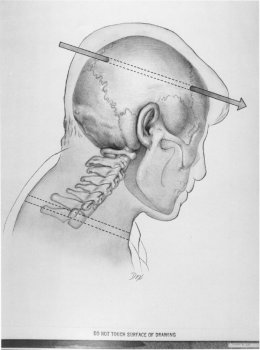
Can you see the fracture of T-1? Baden could.
